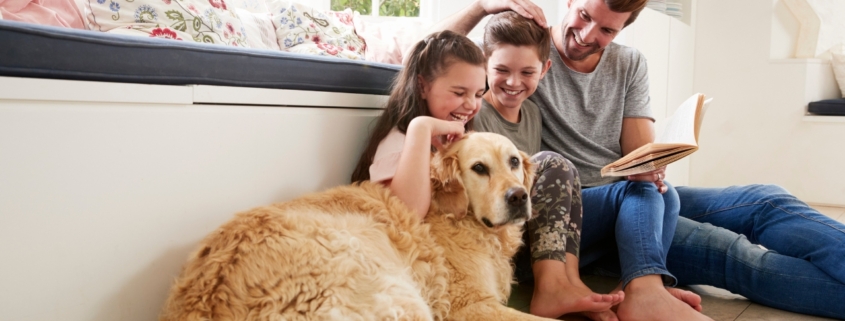Guide To Home Security With Pets
Home Security with pets needs to be addressed when working with your security sales consultant. As cherished members of the family, our pets bring joy and companionship to our homes. When it comes to configuring your home security system, it’s essential to consider the safety and well-being of your furry friends. In this blog post, we’ll explore tips and strategies for customizing your security systems to accommodate the unique needs of your pets.
Pet-Friendly Motion Sensors: Traditional motion sensors can be triggered by the movement of pets, leading to false alarms. Invest in pet-friendly motion sensors designed to distinguish between the movements of animals and potential intruders. These sensors typically have adjustable sensitivity levels to cater to the size and activity level of your pets.
Strategic Camera Placement: Consider the height and range of your security cameras to ensure that they capture important areas without being triggered unnecessarily by your pets. Angle the cameras downward or position them at heights where your home security with pets are less likely to trigger motion detection. This ensures you can monitor your home effectively without constant alerts.
Pet Doors and Alarms: If you have pet doors that grant access to your home, integrate them into your security system. Smart pet doors equipped with sensors can communicate with your security system, providing you with real-time alerts when they are activated. This helps you track your pet’s movements and ensures that unexpected openings are promptly addressed.
Interactive Monitoring Systems: Opt for interactive monitoring systems that allow you to observe your home in real-time. This not only lets you check on your pets but also helps you identify any unusual behavior or potential issues. Some systems even offer two-way communication, allowing you to soothe anxious pets remotely.
Temperature and Environment Monitoring: Keep an eye on the environment in which your pets spend their time. Smart home security systems often come with environmental sensors that monitor temperature and humidity levels. This is especially crucial for pet owners who leave their pets at home, ensuring that the conditions remain comfortable and safe.
Customizable Security Zones: Configure your security system to create customized security zones within your home. By strategically setting up these zones, you can focus on areas that require extra surveillance while minimizing unnecessary alerts in spaces frequented by your pets. This level of customization ensures that your security system works for, not against, your pet-friendly household.
Test the System with Your Pets: Before finalizing your security system configuration, conduct tests with your pets in mind. Walk around your home, paying attention to their usual routes and activities. This firsthand experience allows you to identify potential triggers and adjust settings accordingly.
Securely Store Pet-Sensitive Information: If your security system requires additional information about your pets, such as weight and size, ensure this data is securely stored. Protecting this information is crucial for ensuring the accurate functioning of your pet-friendly security features.
Configuring your home security with pets requires thoughtful planning and consideration. By investing in pet-friendly motion sensors, strategically placing cameras, integrating pet doors and alarms, opting for interactive monitoring, monitoring environmental conditions, creating customizable security zones, testing the system with your pets, and securely storing pet-sensitive information, you can ensure that your security system enhances the safety and well-being of both your home and your beloved pets. With a tailored security approach, you can enjoy peace of mind, knowing that your furry family members are protected.




